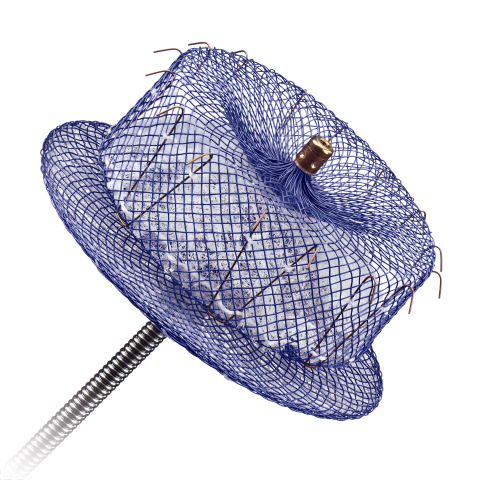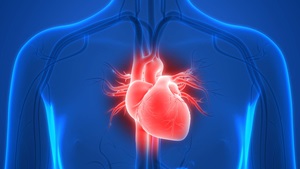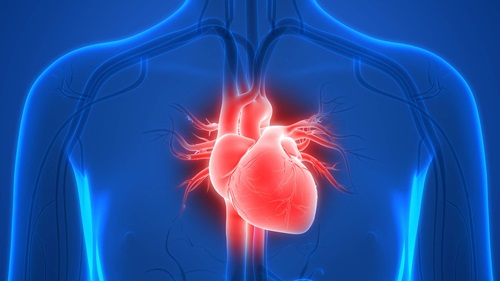Patients with atrial fibrillation have an increased risk of stroke. The Watchman Device can help to prevent this.
The CHADS-VASc score is used to quantify this risk (please see the section on atrial fibrillation for the details of the CHADS-VASc score). People who have a CHADS-VASc score of 1 or more are recommended to take Warfarin, or one of the novel anticoagulant drug, to reduce this risk. Unfortunately, there is also a risk of bleeding while taking one of these drugs. This risk is about one in every 100 patients, each year.
If you are unlucky and develop a brain haemorrhage, bleeding from the bowel or another large area of bleeding after starting an anticoagulant, you would normally be told to stop this drug and not have it, or anything like it, again. Although this is good from a bleeding perspective, it means you will not be protected from developing a stroke. This was why the Watchman device was developed.
The Watchman device is one type of left atrial appendage occlusion device. It is a bit like a collapsible umbrella, which is designed to sit at the entrance to the left atrial appendage. The appendage is a tube-like structure that arises off the left atrium (see figure), a similar to the appendix in the bowel. It is the principal site for clots to form in the heart, which can result in stroke if they break off and travel to the brain. Once inserted in the appendage, tissue grows over the device over the next few months and stops communication of blood from the appendage to the rest of the heart and circulation. By closing off the entrance to the appendage, the risk of stroke is significantly reduced. A large trial using the Watchman device (called the PROTECT-AF Study), showed that the Watchman device is better than Warfarin at preventing a stroke over the long term (at least as good over the short term), and because people do not need to take anticoagulants long term, the risk of bleeding is much lower.
There are several other left atrial appendage occlusion devices either on the market or being developed. None of these have been tested in a large randomised trial yet, but another commonly used device, which I have also implanted, is called the Amulet device. One advantage of this type of device is it has two components with a lobe and a disc section. The disc section acts like a ‘door’, sealing off the entrance to the appendage completely. Another is that it does not have to be placed deep within the appendage to deploy, unlike the Watchman.


More Information:
Risk of device implantation
As one might expect, there are risks implanting a device like this into the heart. Complications occurs in 3 to 5 people in every 100 who undergo the procedure and principally include stroke, creating a small hole in the heart (known as cardiac perforation) or the device falling out of the appendage and travelling through the circulation, known as device embolisation.

Cardiac perforation causes blood to leak out of the heart into its surrounding sac and this can put pressure on the heart and impede its pumping action, a condition known as cardiac tamponade. If this occurs, a fine drain needs to be inserted as an emergency under the ribs into the sac, to drain the blood. This will usually be sufficient to control the problem, but if it is not, surgery is required. If the device embolizes, it will travel through the circulation until it becomes lodged somewhere. Common sites where this can happen are in the aortic or mitral valves of the heart, or in one of the bigger arteries in the lower part of the abdomen. If it becomes trapped in a heart valve, it usually requires surgery to remove and surgery to repair the valve may also be necessary. If it gets lodged in an artery, it may be possible to rescue the device using a snare, which can be deployed using ‘key-hole’ techniques from the artery at the top of the leg. If it is not, surgery is required.
For these reasons, the decision to have a left atrial appendage occlusion device needs to be weighed up carefully. In general, it is reserved for people with high risk of stroke who have bled significantly while taking warfarin or have some other reason why they cannot take an anticoagulant. To undergo the procedure, patients must either take warfarin before and afterwards for a short period, or if this is not possible, a combination of aspirin, and a drug called clopidgrel. This is a drug similar to aspirin, which thins the blood by acting on platelets.
The implant procedure
The procedure is performed under general anaesthetic. This allows continuous visualization of the heart using trans-oesophageal echocardiography, or TOE. TOE is an ultrasound probe that is passed into the oesophagus, or food pipe/gullet. This enables high quality imaging of the appendage. The appendage is accessed using the transseptal puncture technique described previously in the atrial fibrillation page.

A sheath is then advanced into the appendage, which is imaged in detail by injecting dye into it and by using TOE. Measurements are taken at different sites within the appendage to help determine the correct size of device to be used. Once chosen, the device is advanced through the sheath and pushed out through the end into the appendage. Once out of the sheath the device immediately expands into its per-determined shape so that it locks into the entrance to the appendage. Injecting more dye and performing further TOE imaging then checks this position is satisfactory, before release.
Follow up
The day after the procedure the position of the device is checked with a standard echo (using jelly on the outside of the chest) and a with a chest x-ray. Patients either continue to take warfarin or a combination of aspirin and clopidogrel for two months after the procedure. A further TOE is then performed to check the position of the device and to make sure tissue has grown over it completely and no blood flows into the appendage. Once the appendage is closed, warfarin can be stopped permanently and only aspirin long term is usually advisable.






